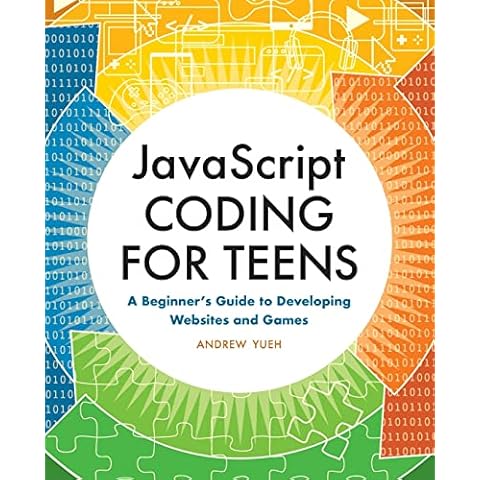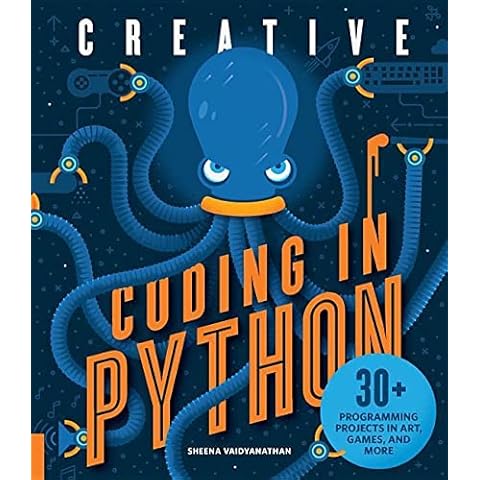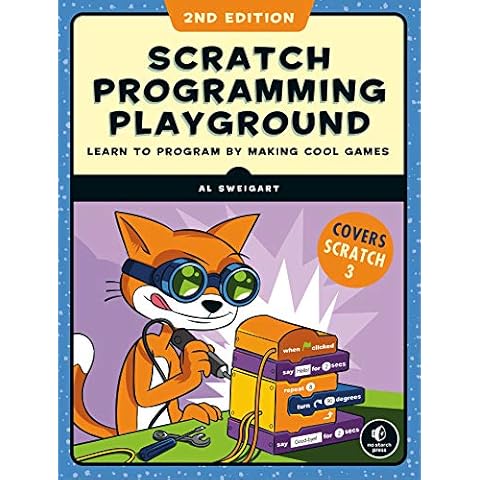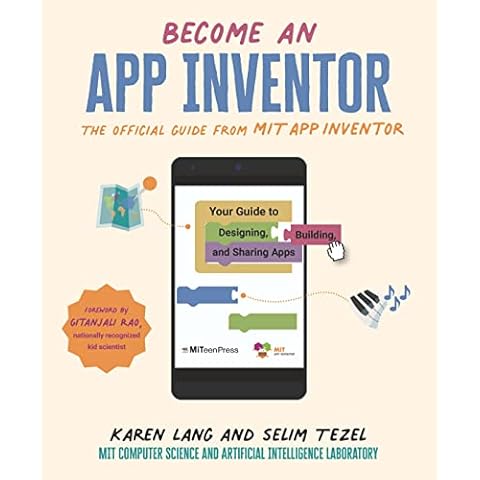Best Computer Programming Books for Teens & Young Adults of 2025
* We independently evaluate all recommended products and services. If you click on links we provide, we may receive compensation.
Computer programming is an essential skill in today's digital world, and there are many great books available for teens and young adults to learn from. These books cover a range of programming languages, from Python to Java, and offer step-by-step guidance for beginners. Some books even include coding challenges and projects to help readers apply what they've learned. Whether someone is interested in pursuing a career in tech or just wants to learn a new skill, these programming books are a great resource for anyone looking to improve their coding abilities.
At a Glance: Our Top Picks
Top 10 Computer Programming Books for Teens & Young Adults
Coding for Minecrafters: Unofficial Adventures for Kids Learning Computer Code
Coding for Minecrafters: Unofficial Adventures for Kids Learning Computer Code is a fun and engaging activity book that introduces kids to the world of coding through the Minecraft world they already love. With easy-to-follow screenshots and colorful illustrations, this book guides learners through adventures that include design, music, animation, and gaming. The book teaches computational thinking and helps young coders to advance in technology education while having fun. Ian Garland, the author of the book, is passionate about video games and programming, and he shares his knowledge through writing. Overall, this book is an excellent resource for kids who want to learn how to code while having fun in the Minecraft world.
Getting Started With Arduino: The Open Source Electronics Prototyping Platform (Make)
Getting Started With Arduino is an excellent guide to the open-source electronics prototyping platform that is the heart of the Maker world. The book covers everything from the basics of electricity and electronics to prototyping on a solderless breadboard, using the Cloud IDE, and building custom plant-watering systems. The book is updated for the latest Arduino IDE release and the new ARM-based boards. Written by Massimo Banzi, the co-founder of the Arduino project, and Michael Shiloh, Arduino educational lead, this book is a must-have for hobbyists and professionals alike.
JavaScript Coding for Teens: A Beginner's Guide to Developing Websites and Games
JavaScript Coding for Teens is a beginner-friendly guide to coding that teaches teenagers how to develop websites and games using JavaScript. The book provides a solid foundation for coding novices by breaking down complex concepts into easy-to-understand language and straightforward directions. With practical exercises that test their ability to modify existing programs or create new ones, teens can gain confidence and build computer skills that will last a lifetime. The book's conversational style keeps readers engaged and encourages them to continue learning. Overall, this book is an excellent resource for teens and beginner programmers interested in web development.
20 Makey Makey Projects for the Evil Genius
20 Makey Makey Projects for the Evil Genius is a comprehensive guide for those interested in exploring the Makey Makey invention kit. The book features 20 DIY projects, ranging from beginner to expert level, with easy-to-follow, fully-illustrated instructions and photographs. The projects encompass various categories, including Fun and Games, Interactive, Hacks and Pranks, and Makey Makey Go, and incorporate technologies like Raspberry Pi, Processing, Scratch programming, and 3D printing. Written by two educators, the book is suitable for makers of all levels, and no prior technical experience is required. Overall, it is an excellent resource for those looking to unleash their creativity and innovation.
The Invent to Learn Guide to the micro:bit (Invent to Learn Guides)
The Invent to Learn Guide to the micro:bit is a comprehensive and colorful book that teaches readers how to code and build interactive gadgets using the popular BBC micro:bit microcontroller. With over 30 projects, step-by-step building instructions, and full-color code, this book is perfect for beginners and experienced makers alike. The book takes a comprehensive approach to teach physical computing, engineering, computer science, and electronics to young people aged 8-16. What makes this book unique is its focus on expanding the range of what was previously possible using the micro:bit as its “brain board” and the use of the Microsoft MakeCode block-based programming environment.
Creative Coding in Python: 30+ Programming Projects in Art, Games, and More
Creative Coding in Python is a great book for kids who want to learn how to code using Python. It offers over 30 projects that teach the fundamentals of computer programming in a fun and interactive way. The book is written by Sheena Vaidyanathan, a computer science educator who uses illustrations, flowcharts, and pseudocode to help kids understand the concepts. The book covers a wide range of topics, from chatbots to arcade games, and includes sample lesson plans for teachers. Overall, Creative Coding in Python is an excellent resource for anyone who wants to learn how to code in Python.
The Big Book of Makerspace Projects: Inspiring Makers to Experiment, Create, and Learn
The Big Book of Makerspace Projects: Inspiring Makers to Experiment, Create, and Learn is a comprehensive guide for makers of all ages and skill levels. It features step-by-step instructions with photos and illustrations for easy-to-follow DIY projects that cover a wide range of topics from paper circuits to 3D printing. The book offers practical tips for beginners and open-ended challenges for advanced makers. The authors present 51 tried and tested activities with insightful tips for classroom use. The book is a one-stop source for achievable classroom projects and a must-have for maker librarians.
Scratch 3 Programming Playground: Learn to Program by Making Cool Games
The Scratch 3 Programming Playground is a great introduction to coding for kids who want to learn how to build programs by making cool games. With Scratch 3, a drag-and-drop programming language, readers can learn to code on the go with the ability to run on tablets and smartphones. Each game includes easy-to-follow instructions, review questions, and creative coding challenges to make the game unique. The book is well-written, full of humor and explanations of how things work, and implements things in a sensible way. Highly recommended for kids who want to learn how to make epic games and have fun while doing it.
Become an App Inventor: The Official Guide from MIT App Inventor: Your Guide to Designing, Building, and Sharing Apps
Become an App Inventor: The Official Guide from MIT App Inventor is an engaging guide that teaches anyone to design and publish their own apps with no experience necessary. With colorful graphics and easy-to-follow instructions, readers can learn how to create six different apps, including a working piano, a maze game, and their own chat app to communicate with friends. The book includes inspiring stories of young inventors already using their own apps to make a difference in their communities. This book is a must-have resource for passionate creators who are ready to actively invent and design.
Doing Math with Python: Use Programming to Explore Algebra, Statistics, Calculus, and More!
Doing Math with Python is a great resource for anyone who wants to explore high school level math topics like statistics, geometry, probability, and calculus using Python. The book starts with simple projects and gradually moves towards more complex ones, helping readers gain valuable programming skills. The author, Amit Saha, does an excellent job linking Python and upper-level math concepts, and demonstrates how Python can be transformed into a mathematical stage. Whether you're a math enthusiast or a teacher looking to bring programming into the classroom, this book is a must-read.

Frequently Asked Questions (FAQs)
1. Can a teenager learn programming?
When you are a teenager, it is easier to learn the basic principles of programming like control flow, variables, and functions all in one programming language. As teenagers, you are also open to a lot of support no matter your skill level and you get to meet people and make new friends.
2. What book should every programmer read?
Code Complete: A Practical Handbook of Software Construction A mammoth piece of work, a must read for anyone who wants to read all about programming constructs and best practices. Truly an encyclopaedic book - 960 pages in its most recent revision!
During our computer programming book for teens & young adults research, we found 287 computer programming book for teens & young adults products and shortlisted 10 quality products. We collected and analyzed 6,885 customer reviews through our big data system to write the computer programming books for teens & young adults list. We found that most customers choose computer programming books for teens & young adults with an average price of $15.98.
Wilson Cook is a talented writer who has an MFA in creative writing from Williams College and has published more than 50 books acquired by hundreds of thousands of people from various countries by now. He is an inveterate reading lover as he has read a vast amount of books since childhood.










